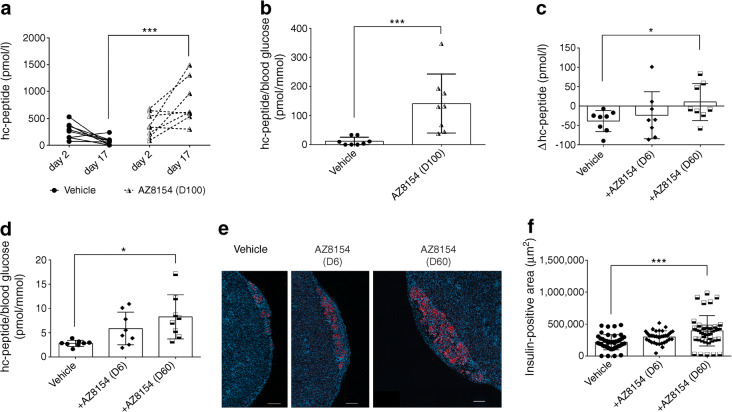Fig. 3.
GPR44 inhibition improves human islet function and preserves beta cell mass post transplantation in diabetic mice. (a) Human C-peptide levels measured on day 2 and day 17 in mice transplanted with human islets and treated with 100 mg/kg per day AZ8154 or vehicle, n = 8 mice/each experimental group. (b) The ratio of human C-peptide over fasting blood glucose analysed on day 17 in mice transplanted with human islet grafts and treated with 100 mg/kg per day AZ8154 or vehicle, n = 8 mice/each experimental group. (c) Assessment of difference (Δ value) in the level of plasma human C-peptide measured on day 2 and day 17 in mice transplanted with human islets and treated with 60 mg/kg per day AZ8154 or vehicle, n = 8 mice/each experimental group. (d) The ratio of human C-peptide over fasting blood glucose analysed on day 17 in mice transplanted with human islet grafts and treated with 60 mg/kg per day AZ8154 or vehicle, n = 8 mice/each experimental group. (e, f) Representative images showing immunofluorescent staining of insulin (red) together with DAPI nuclear staining (blue) on day 17 (e) and quantification of the area of insulin-positive cells within transplanted islet grafts (f) treated with AZ8154 or vehicle. Magnification ×10; scale bar, 200 μm. In all analyses, data are presented as means ± SD and analysed with one-way ANOVA with Bonferroni corrections. *p < 0.05 and ***p < 0.001. D6, 6 mg/kg per day; D60, dose 60 mg/kg per day; D100, 100 mg/kg per day; hc-peptide, human C-peptide

